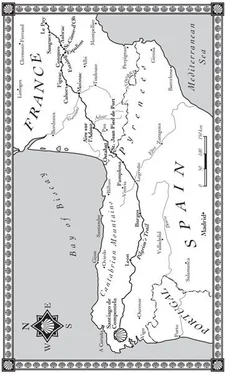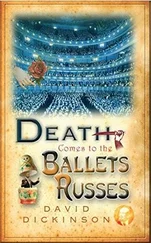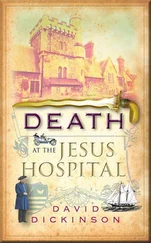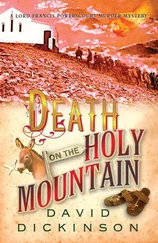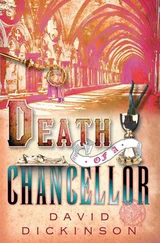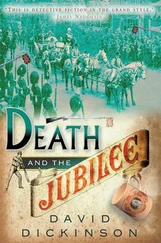David Dickinson - Death of a Pilgrim
Здесь есть возможность читать онлайн «David Dickinson - Death of a Pilgrim» весь текст электронной книги совершенно бесплатно (целиком полную версию без сокращений). В некоторых случаях можно слушать аудио, скачать через торрент в формате fb2 и присутствует краткое содержание. Жанр: Исторический детектив, на английском языке. Описание произведения, (предисловие) а так же отзывы посетителей доступны на портале библиотеки ЛибКат.
- Название:Death of a Pilgrim
- Автор:
- Жанр:
- Год:неизвестен
- ISBN:нет данных
- Рейтинг книги:5 / 5. Голосов: 1
-
Избранное:Добавить в избранное
- Отзывы:
-
Ваша оценка:
- 100
- 1
- 2
- 3
- 4
- 5
Death of a Pilgrim: краткое содержание, описание и аннотация
Предлагаем к чтению аннотацию, описание, краткое содержание или предисловие (зависит от того, что написал сам автор книги «Death of a Pilgrim»). Если вы не нашли необходимую информацию о книге — напишите в комментариях, мы постараемся отыскать её.
Death of a Pilgrim — читать онлайн бесплатно полную книгу (весь текст) целиком
Ниже представлен текст книги, разбитый по страницам. Система сохранения места последней прочитанной страницы, позволяет с удобством читать онлайн бесплатно книгу «Death of a Pilgrim», без необходимости каждый раз заново искать на чём Вы остановились. Поставьте закладку, и сможете в любой момент перейти на страницу, на которой закончили чтение.
Интервал:
Закладка:

David Dickinson
Death of a Pilgrim
PROLOGUE
The message carved in stone is very simple. It tells of a choice, a choice between eternity and salvation, a choice between paradise and the torments of the damned, a choice between heaven and hell. The work is divided into three horizontal sections. In the centre stands the largest figure of them all, Christ risen from the dead and wearing a long tunic with a scarf of white wool embroidered with black crosses, usually reserved for the Pope and certain church dignitaries. Above him is a cross carried by two angels holding a nail and a spear. His right hand points upwards and to his right. There a procession of the chosen ones, the Virgin Mary and St Peter, carrying the keys of the kingdom, lead the elect into paradise. On the strips of stone that divide the panels there are Latin inscriptions. For Peter and Mary and Abraham, seated with the other victors in this religious race, the message is clear: ‘Thus are given to the chosen who have won, the joys of heaven, glory, peace, rest and eternal light.’
On the other side of the work there is neither peace nor glory nor eternal light. Christ’s left hand points to the left and sharply downwards. Beneath him is a panel enclosed by two doors, one ornate and graceful with two keyholes for the locks, the other with heavy metal supports and no keyholes. The chosen are led by the hand to heaven’s gate, but in front of the gateway to hell diabolical monsters pummel the damned and force them into the vast open jaws of Leviathan: in the words of the Book of Isaiah, ‘Sheol, the land of the damned, gapes with straining throat and has opened her measureless jaws: down go nobility and the mobs and the rabble rousers.’ Presiding over hell is Lucifer, Prince of Darkness, with a hideous grimace, bulging eyes and short hair pleated to resemble a crown. To his left a miser or a thief has been hung up with a pouch of hoarded or stolen money wrapped round his neck, killed by the weight of his own greed. To his right a messenger devil is whispering into Lucifer’s ear the news of the latest torments in his kingdom. Lucifer’s legs are adorned with serpents and his feet are pressing down to hold a sinner being roasted on a brazier. In the panel above, an abbot is holding on to his crozier, prostrate in front of a deformed and bestial demon. In his net the demon has captured three other false monks and is preparing further torture. Behind him, a heretic, his lips shut and a closed book in his hand, is having his mouth crushed while a demon devours his skull. To the right a false banker or moneychanger is about to atone for his sins. A demon is melting the metal in a fire. He is tilting back the false banker or moneychanger’s head and preparing to make him swallow the liquid of his infamy. A king has been stripped naked and a demon is preparing to pull him off his throne with his jaws. A glutton has been hung upside down with a pulley and forced to vomit his excesses into a bowl while another fiend prepares to beat his feet with an axe. There is a couple taken in adultery and fornication, possibly a monk and a nun, now tied together for ever with a rope joining their heads at the neck. The sins of pride and power are here in stone. A knight in an expensive mailcoat has been forced upside down by a demon pushing a pole into his back. Another seems to be trying to tear his arms off. A scandalmonger, forced to sit in a fire, the flames licking round his waist, is having his tongue pulled out. A glutton with an enormous belly is going head first into a piece of kitchen equipment, a cauldron or a boiling casserole. Love of money, love of power, love of women who are not your wife, love of gossip are all portrayed here, surrounded by demons with fire and snakes and pulleys and axes and prongs to welcome you into hell. ‘The wicked’, the inscription proclaims, ‘suffer the torments of the damned, roasting in the middle of flames and demons, perpetually groaning and trembling.’
These scenes are carved in the tympanum, the space above the doorway, in the Abbey Church of Conques in southern France. They were put in place early in the twelfth century, possibly around 1115. For a couple of hundred years they would have acted as inspiration and warning, threat and reward, to the tens of thousands of pilgrims passing through Conques on their journey to Santiago de Compostela, the field of stars on the north-western coast of Spain, final resting place and shrine of St James the Apostle, which was the ultimate destination of one of Europe’s most important pilgrimages. As they came into the great square in front of the church in Conques the pilgrims would have stared in awe, and possibly terror, at this visible representation of the likely fate of all their souls in the world to come.
And now, in this year of Our Lord 1906, another group of pilgrims, bringing perhaps the same hopes and the same vices, are preparing to set out on the same pilgrims’ path to Santiago and stand in front of the great tympanum at Conques. For them, as for their predecessors eight hundred years earlier, the inscription at the bottom of the sculpture still rings true: ‘Oh sinners, if you do not mend your ways, know that you will suffer a dreadful fate.’
PART ONE
NEW YORK-LE PUY-EN-VELAY
Be for us, a companion on the journey, direction at our crossroads, strength in our fatigue, a shelter in danger, resource on our travels, shadow in the heat, light in the dark, consolation in our dejection, and the power of our intention; so that with your guidance, safely and unhurt, we may reach the end of our journey and, strengthened with gratitude and power, secure and happy, may return to our homes, through Jesus Christ, our Lord. Apostle James, pray for us. Holy Virgin, pray for us.
Pilgrim’s prayer, Cathedral of Le Puy1
A bell was ringing, somewhere close. As the man struggled towards consciousness he thought he was deep, deep underwater. A ship was sinking slowly beneath him, heading straight down for her last resting place on the sea bed. Maybe it was one of his ships. Ghostly figures, their clothes streaming behind them, were struggling towards the surface through the murky water. Other figures, the fight abandoned, were falling backwards towards the ocean floor. Still the bell rang on. Now the picture in the man’s mind changed. He was in a coal mine. The bell meant danger, a rock fall perhaps, or a collapsed shaft. Miners were running as hard as they could towards the way out, trying to escape before they were buried alive. Maybe it was one of his mines.
Then the bell stopped. The clanging was replaced by a loud knocking on the bedroom door. The man woke up and peered at his watch. It was a quarter to three in the morning.
‘Sir, sir, it’s the telephone, sir! It’s the hospital, sir!’ The butler’s voice was apologetic, as if he felt hospitals had no right to disturb his employer at this time of night. He was still suspicious of telephones.
‘Of course it’s the bloody hospital, you fool,’ shouted the man, beginning to pull on the clothes he had dropped on the floor the night before. ‘Who else would telephone at this time, for Christ’s sake? What did they say?’
‘You’re to come at once, sir. I’ve ordered the carriage.’
‘God in heaven!’ said the man. ‘I’ll be with you in a moment.’
This man didn’t answer telephones. He didn’t open letters. In normal times he didn’t tidy his clothes away. He didn’t clean his shoes. He paid other people to perform these mundane tasks for him. They marked, these triumphs over the trivia of modern life, the milestones on his journey to unimaginable wealth, his town house in New York, his mansion in the Hamptons, his yacht, his servants, the great industrial empire, the mountains of money sleeping in the vaults of the Wall Street banks.
Читать дальшеИнтервал:
Закладка:
Похожие книги на «Death of a Pilgrim»
Представляем Вашему вниманию похожие книги на «Death of a Pilgrim» списком для выбора. Мы отобрали схожую по названию и смыслу литературу в надежде предоставить читателям больше вариантов отыскать новые, интересные, ещё непрочитанные произведения.
Обсуждение, отзывы о книге «Death of a Pilgrim» и просто собственные мнения читателей. Оставьте ваши комментарии, напишите, что Вы думаете о произведении, его смысле или главных героях. Укажите что конкретно понравилось, а что нет, и почему Вы так считаете.
